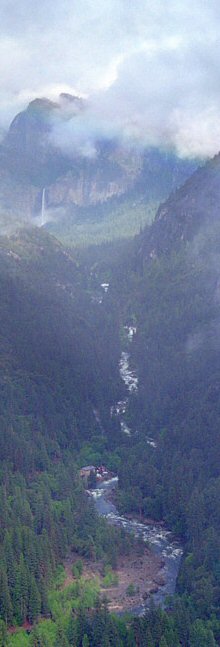So the news is out - from Yahoo to Fox News - something’s real about “cold fusion” - whatever it is. The research presented at the 237th American Chemical Society national meeting this week in Salt Lake City, Utah, has made the point clear, and it’s been heard around the world.
Don’t ask me how the New Energy Technology Symposium, spotlighting low-energy nuclear reaction research, ended up in the birthplace of this scientific controversy on its 20th anniversary - to the very day. It’s clear, though, that this confluence of events, along with the results from the San Diego Navy SPAWAR laboratory (List of Papers - Lab Visit Video - CR-39 Tutorial Video), triggered a wave of media attention unprecedented since the original announcement by the University of Utah and discoverers Martin Fleischmann and Stanley Pons on March 23, 1989.
And more is to come with a few brief television reports, the first tomorrow night on the Science Channel and another on “60 Minutes” in the near future.
The ACS symposium was organized by Jan Marwan, an electrochemist from Berlin, Germany, and included about 30 presentations by researchers from the U.S., Italy, Ukraine, Russia, China and India.
Throughout the week, ACS provided opportunities for many researchers, representing a broad cross-section of the conference, to communicate their research to the media. The LENR researchers had their chance on Monday.
Thus, at noon on March 23, 2009, ACS held a press conference with several invited LENR researchers (Segment 1, Segment 2). This was 20 years, plus or minus a few minutes, after the 1989 press conference. I was on Monday’s panel, helping to field questions and to bridge the gap between the scientists on the panel and media representatives who did not have expertise in this area.
Much of the coverage of the press conference is accurate, and this is encouraging. However, a few corrections are called for. I have been reporting on the field since 2000, not 1989. The statement “hitherto unknown nuclear process or processes” is not mine; it belongs to Fleischmann and Pons, whom I was quoting.
Which brings me to the point of this blog entry. For the last few years, I have been noticing more and more reasons why “cold fusion” does not look like a fusion process. This was the core of my presentation at ACS last year. Any nuclear physicist can tell you that “cold fusion” doesn’t look like thermonuclear fusion, but I came into the field with naivety and a very open mind.
Before you jump to any conclusions about the nonfusion suggestion, note carefully that the empirical evidence for nuclear-scale energy, products and effects is unambiguous. As I explained this distinction (nuclear phenomena but not nuclear fusion) to a reporter at ACS yesterday, I could see the puzzled look on his face. This distinction cries out for clarification.
Let me explain by turning the clock back 20 years. In Fleischmann and Pons’ April 10, 1989, preliminary note, they reported an abundance of heat coming from their chemistry experiment - way too much heat to be accounted for by any known chemistry. It was obvious that it was not nuclear fission. “What else could it be?” Fleischmann asked. The only mechanism that they could conceive of was fusion. However, they also left room for a wild card: “hitherto unknown nuclear process or processes.”
And this is the point: So many people - both proponents and opponents of LENR - have forgotten Fleischmann and Pons’ alternate hypothesis. The question before us is not “Is cold fusion real?” but “Are the nuclear effects real?”
A large body of experimental research has been available for years to answer the latter question in the affirmative. Recognition of the experimental validity finally arrived this week at ACS, and this is a milestone not only for the LENR researchers and their field but also for science.
Now, to the bottom line: Is it fusion, or is it a “hitherto unknown nuclear process or processes?” It is crucial to mentally decouple the experimental phenomena from the assumed validity or invalidity (depending on your perspective) of a fusion process. Let us reconsider Fleischmann’s question. What else could it be? At least one possibility has appeared: weak interactions, specifically ultra-low momentum neutron-catalyzed reactions. I provided additional perspective on this during my talk at ACS on Sunday. I welcome your thoughts and comments.

